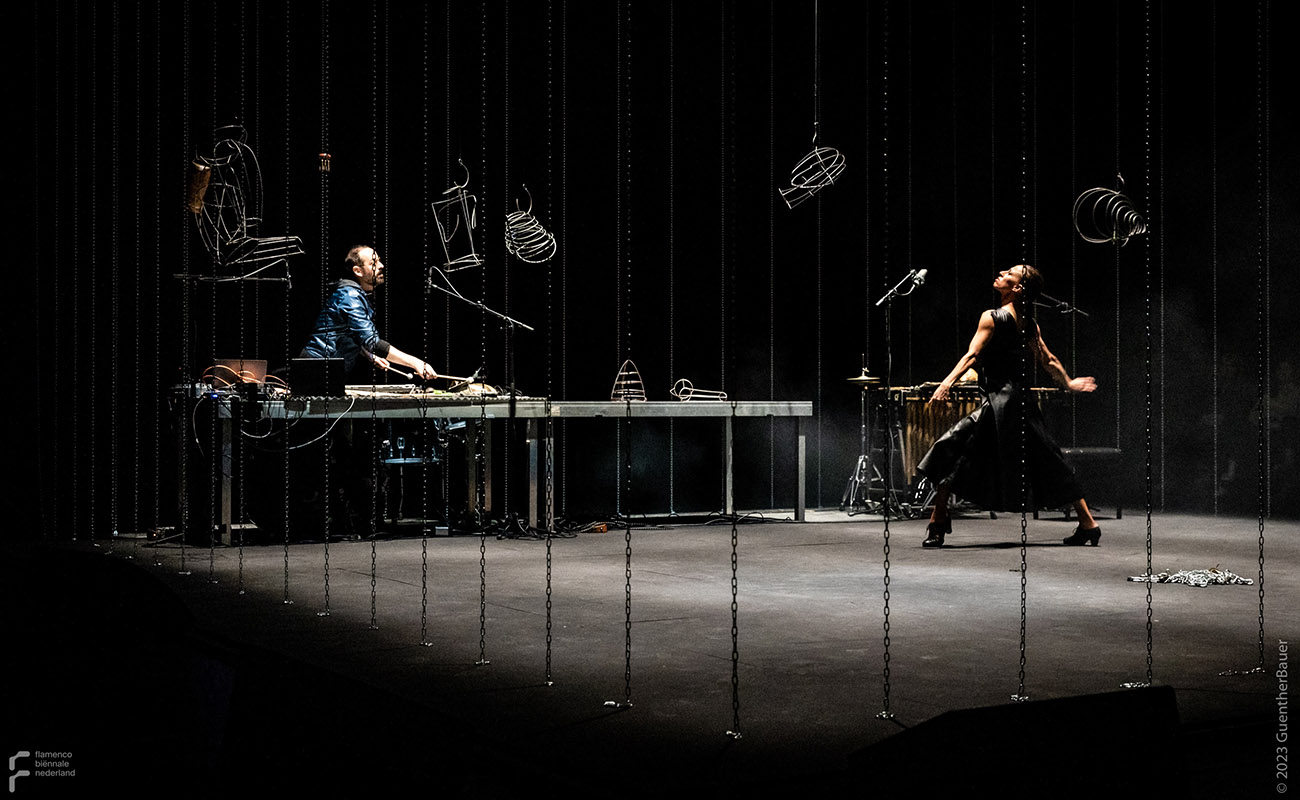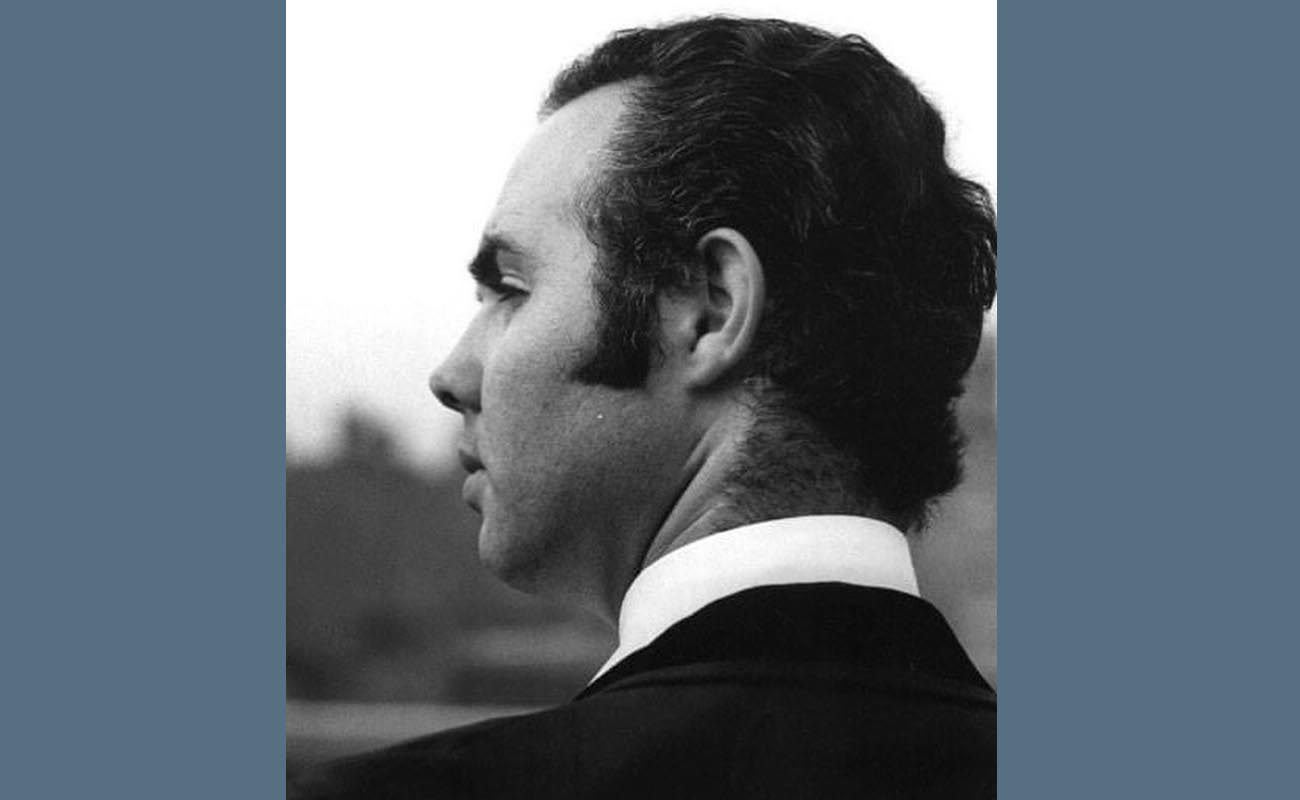Fantastic opening week for the Biennial Flamenco Festival in the low Countries
The 9th Biennial Flamenco of the lower countries began on the 20th of January with great success, despite facing the difficulty of balancing both traditional and contemporary flamenco shows.

From its foundation in 2006, the 9th biennial of flamenco in the lower countries, flamenco biennale Netherlands has become an important event in the international flamenco scene, surviving despite the pandemic that practically paralysed the whole art world, this year it shines with new splendour.
Ernestina van de Noort, general director and founder of the dutch festival, who previously had streamed shows during the pandemic, provided one of the small flashes of hope during those dark years in the past. Now we can look back on an exciting weekend that kicked off this year’s festival with four sold out shows in Amsterdam’s Muziekgebouw.
The great hall of Muziekgebouw, holding over 700 seats, has been full since the first night’s opening show, with the new cante dream team of Israel Fernández and Diego del Morao scheduled to open the night. However, the crowd had to wait for them as young Jerezian singer Pedro Montoya Junquera “Chanquita” began the evening with a soleá for bulería and fandangos that stole the show.
The audience replied with immense applause that then led to the welcoming of an iconic Jerez singer. Juana la del Pipa, dawning a beautiful green dress and unreal stage presence, captured the audience with her tango. The first shouts of ¡olé! and ¡viva Jerez! Rang out through the audience during this spectacular show.
The red carpet was then laid out for Israel Fernandez who made the wishes of the audience come true. His excellent voice with its special timbre, accompanied by the unmistakable backing vocals of Diego del Morao and his extraordinary falsettos, flowed to a finale which completely captivated the audience.
In the second evening we were greeted with something completely different. With “La Reina de Metal”. Vanesa Aibar and percussionist Enric Monfort took us to a totally new world. Electronic music, like all the genres and subgenres of pop music, has always been intertwined with dance. These days, any type of dance, even flamenco, can find itself accompanied by electronic music, with La Reina de Metal, showcasing this new mixture of cultures and genres.
Music is used to describe an atmosphere, creating sonic landscapes to enrich the imagination with vivid emotions. Now performance is not merely an illustration of the music but medium in itself. Recently flamenco artists have come to adopt this approach and use electronic music as a channel for artistic expression.
In “La Reina de Metal” the audience was divided into three seating groups and were treated to the sonic landscape created by the Holland based collective “4D”, submerging their spectators in a sea of sound. With 32 speakers, sound design on stage allowed the sound to move around the auditorium, morphing and expanding for the crowd to experience. 4D created a 3D stereo experience, similar to the movies when you see and hear a train passing from left to right on the screen, with the picture and sound working together to immerse the spectators in the moment with percussion, melody and harmony coming from all directions.
“The Biennial de Flamenco of the low countries continues until the 9th of February, ending with “Flamenco: Espacio Abierto” from Alfonso Losa. Until then, alongside shows, there are workshops, master classes, film screenings and much more”
Enric Montfort dynamically mixed electronic music with percussion coming from batteries to cowbells. Throughout the show, using an electronic vibraphone to create a constant dialogue with dancer Vanesa.
Over the recent years Venesa Aibar has developed her own language through dance. As one of her colleagues said to me jokingly after the show “it is so perfect that it’s almost disgusting”. Just as she shamelessly turns long metal into a bata de cola, seconds later she transports us to an imaginary garden where she dances like the serpentine Loie Fuller. It’s important to note that she easily communicates these ideas, despite the complexity of her new work.
After these contrasting performances, Sunday acted as a kind of balance with the ode to the soleá by María Moreno: “o../o../.o/o./o. (soleá )”.
Here the defenders of pure flamenco can reconcile with contemporary flamenco lovers and enjoy, on one hand, a modern stage production alongside a great song and dance. The simple but symbolic stage design by Rafael Villalobo was accompanied by the breathtaking light show from Antonio Valiente, who was limited to a huge circle of chalked lime on the stage floor. The circle symbolises unity, of the absolute, the perfect, the divine and acted as protection against bad spirits. But also limits, excludes and judges who shall enter and what does not belong. If one was to enter the circle, its powers would become permeable.
This was the space that dancer Maria Morena and director Pablo Martin Caminero used for their powerful show.
The piece focused on the soleá, focusing on how it was the birth of flamenco.After an explosive start, little by little the pieces were formed into a fabric that was woven into the bata de cola that is soleá . Notably the show included a performance of the hurdy gurdy, an instrument exceptionally played by excellent artist Raul Cantizano. An instrument from the 11th century, popular among all of the Renaissance. It’s a string instrument whose strings are plucked by a wheel that rotates through a lever cranked by the artists. It is an instrument par excellence, always in a circle in repetition, like the rotation of the earth, the cycle of the seasons and the soleá.
Here, in every movement, intonation and sound had its own individual meaning. With all artists having their moment in the spotlight, the percussionists Manu Maseado in his duo with María, Raul Cantizano having the audience in the palm of his hand ,the magician, Eduardo Trassierra on guitar, the angelic Ángeles Toledano with his Stabat Mater by Vivaldi and, of course, María Moreno giving a performance we won’t forget anytime soon.
As is custom, before every function there is the presentation, explaining the shows that were received with enthusiasm. After the performances there was a Q and A´s with the artists during which they generously and happily responded to questions from the audience while enjoying some wine.
But the Bienal de Flamenco of the lower countries is far from over. Continuing until the 9th of february, when it ends with “Flamenco: Espacio Abierto” , by Alfonso Losa. Until then, apart from the shows, there are workshops, masterclasses, film showings and much, much more.
Translation: Eoin McLoughlin




